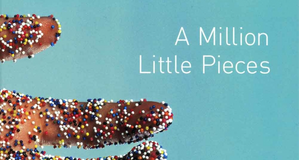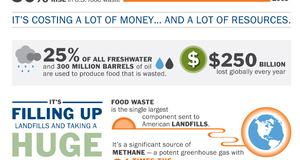Consumption: The Role of Eating in Rehabilitation in the Memoirs "A Million Little Pieces" and "Two Kinds of Decay"
By
2014, Vol. 6 No. 12 | pg. 3/3 | « Allen Borst notes that James Frey’s memoir has a quasi self-help message, which displays recovery as a process, not simply a pledge. Although, he argues ultimately that “By de-specializing the addict-subject confession and transforming it into a ubiquitous procedure for managing everyday life, enterprise culture and self-help have mass-produced addict-subjects in constant need of a fix.” (Borst 2010) Borst exposes both Frey and his memoir as byproducts of the self-help culture. While the book itself is largely a product of a self-help culture, the portrait of Frey in it, is that of a champion of the self-help philosophy. As the organizations of the self-help movement themselves “represent an alternative to state, market, and profession” and which “challenge sociopolitical authority structures governing institutionalize,” Frey too constructs a support group, for himself, which functions as an alternative treatment method to the institution’s methodology. (Archibald 2008) Eating is thus one of the vessels by which Frey’s self-help philosophy can be showed to have had a positive effect, as it expresses an extreme behavior change, which is also a lifestyle change, which is lastly, and most importantly, a manufactured change to the narrative about the self. While Frey’s rehabilitation center utilizes the Big Book of AA (2001) and twelve-step program, he prefers instead the ancient wisdom of the Tao Te Ching (1973), yet it still nonetheless functions as a self-help tool. Frey compares the book’s new function in life with that of the necessity of food; “This little book feeds me. It feeds me food I didn’t know existed, feeds me food I wanted to taste, and have never tasted before, food that will nourish me and keep me full and keep me alive.” (Frey 2003) This comparison between the act of reading and the act of eating serves as an obvious connection between how Frey is struggling to learn to rely on outside resources for nourishment and survival.But, is it not also true that stories serve a function as vital as food for the maintenance of the self? In a culture of self-help, this is certainly the case, because “Like habitual drug use, the rituals offered by enterprise culture and self-help supplant the things that these rituals promised to deliver: truth, insight, stability, self-understanding, control and so forth. The addict-subject confession, then, provides the template of enterprising self-authorship by dramatizing the very cycles of failure, recovery, and relapse that it addresses.” (Borst 2010) As Frey exhibits in his own treatment, the Tao becomes a template for his own recovery, and so too does Frey’s wish that his own text will function for future readers as the necessary template for theirs. Frey refutes the notion of the usefulness of the one-size-fits-all approach of the twelve step, and validates his own search for enlightenment through references to proven texts like the Tao, yet he nevertheless promotes the key notions of the self-help movement. In his rejection of the narrative devices of the twelve-step program and in his acceptation of the narrative of Tao, Frey describes finding a new narrative of self as a kind of nourishment like discovering some new food or acquiring a new taste. Redemption, as Frey wishes to show us, is simply the means of creating a new self-narrative; in this way, accepting a new self-narrative is like acquiring a new experience of the self. Manguso, unlike Frey, rejects the notion that through her recovery process she has become a better person, been in anyway redeemed, or changed in general. While she of course recognizes that her life has changed since her recovery experiences, she plainly states, “I don’t know if I changed because of my disease or in spite of it.” (Manguso 2008) By acknowledging the fact that the influences of life far exceed the scope of the memoirist, Manguso suggests that life offers few conclusive answers and endings. Manguso begins her novel by implying as much when she lists things in her life that she still lacks; “I still don’t have a vegetable garden. I still haven’t been to France.” (Manguso 2008) Nowhere else does Manguso discuss the importance of her growing a vegetable garden or going French. Manguso’s specific choices, however, are interesting, as traveling is a symbol of one’s willingness to have new experiences, and the vegetable garden is a humble symbol of self-reliance and sustainability. While these are things Manguso seeks in her life, even though she is now free from her illness she has yet to obtain them, which suggests that recovery has not changed her into something altogether new and completely resolved. This begs the question of whether a memoir about rehabilitation needs to have a transformative, awaking moment for the author, a moment that clearly identifies the subject as no longer identifying as being ill. Because the two memoirs begin with Frey and Manguso either having hit bottom or having just begun the recovery process, it would be only logical that they conclude with their having become well, thereby giving us two depictions of the author—one as the sick subject, the other as the future healthy writer. The formula of the awakening story is well recognized and as Thomas DeGloma notes, “the basic awakening story formula is evident across multiple realms of social life and historical contexts. When individuals use this narrative formula, they articulate and attempt to resolve cultural tensions between various communities of meaning in the modern world.” (DeGloma 2010) As well, for Frey the search for truth is important and plays a significant role in his struggle to resist the awakening narrative of the twelve-step program, which centers on the recognition of a higher power. This ideology does not mesh with Frey’s worldview, and he describes being unconvinced by Bill’s story, the founder of AA, which is indeed an awakening narrative: He became convinced that trusting in God, or in some form of a Higher Power, could transform his life. He decided at that instant to turn his will over and place himself unreservedly under God’s care and direction. He never drank again, he developed the Twelve Steps and the concept of Alcoholics Anonymous, and he devoted his life to spreading the word. It is a touching story, and it is written more to convince than to tell. I am not convinced. No way, not at all. Not at all. (Frey 2003) Frey understands the power of an awakening story not only as a convenient narrative formula, but likewise as a compelling one, and even though Frey is emphatic about not being convinced by this particular story, he nonetheless understands its function. The twelve-step program is a narrative tool that focuses on the consistent reiteration of the addict-subject confession. But, while Frey complains that he wants nothing to do with “a lifetime supply of bullshit Meetings full of whining, complaining and blaming,” isn’t that exactly what Frey’s memoir accomplishes. Is it not the case that his memoir simply exchanges the older all-encompassing worldview type of awakening of AA, for the more personally catered kind of awakening of the self-help culture? Which can find the hidden “truth” behind any activity or thought pattern, including the diet fads of which the fat memoir were a product of, with their secrets as to how to eat right. Frey may reject Bill’s story, but he nonetheless turns his own story into an awaking narrative that’s similarly about how you easily fix your life, if you would only listen to my story—it is just missing a central truth, a reflection of the solipsism at the center of the self-help culture, which focuses on consistent self-improvement. Certainly the more trustworthy depiction of illness, the recovery progress, and to a degree, substance dependence, is depicted in Two Kinds of Decay, which as a conterstory demonstrates the process of recovery as having no clear end, and serving no clear lesson. As Abigail Gosselin notes, “Memoirs about psychological problems like addiction frequently have tide-endings that suggest complete recovery or management of the problem…A counterstory can avoid false representations of finality by depicting these experiences within present time in an active, dynamic way, as living experiences that must be confronted continuously.” Similar to how Manguso’s demonstrates the complexity in the distinction between disease and addiction, Manguso also demonstrates how the self is often not easily identifiable as either a healthy subject or sick subject. In fact, the date Manguso gives to others for when she finally ended her battle with CIDP is merely the realization of another, larger health concern: “I say 2004 is the year I got better, because it’s the year the biggest problem in my life changed from CIDP to drinking, and that’s a separate problem.” (Manguso 2008) At the conclusion of her memoir, as if in response to Frey, Manguso writes: “Those who claim to write about something larger and more significant than the self sometimes fail to comprehend the dimensions of a self.” (Manguso 2008) While Frey’s memoir implies his entire recovery process is closely documented within it, and that the Frey we see at the end is a profoundly different person from the Frey in the beginning, Manguso demonstrates that the maintenance of the self is consistently a concern and always potentially in question. While these memoirs are have different outlooks on rehabilitation, recovery, and maintaining good health, both nonetheless display the crucial connection between eating and wellness, a well-established relationship that is closely studied in other disciplines such as psychology and biology, but has been largely ignored in literary analysis. This is absurd considering the immense role food plays in our everyday lives, both personally and culturally. Not only is it nourishment, but also it is a subject itself to be discussed and around which socialization thrives. Both memoirs also demonstrate how overcompulsion, toxic substances, and a lack of meaningful food-eating experiences are closely associated with physical and mental illness. Also, they demonstrate how we personalize our eating experiences with relation to self-expression, and more importantly, with identity and self-efficacy. Both Frey and Manguso help illustrate the obvious fact, that in profound ways, we are what we eat, or rather, what we don’t eat. ReferencesAlcoholics Anonymous: the story of how many thousands of men and women have recovered from alcoholism. (4th ed.). (2001). New York City: Alcoholics Anonymous World Services. Borst, A. Managing the Crisis: James Frey's "A Million Little Pieces" and the Addict-Subject Confessiont .Cultural Critique,75, 148-176. Currie, J., Vigna, S.D., Moretti, E., Pathania, V. (2010) The Effect Of Fast Food Restaurants On Obesity And Weight Gain. American Economic Journal: Economic Policy, 23.1, 32-63. Degloma, T. (2010) Awakenings: Autobiography, Memory, and the Social Logic of Personal Discovery.Sociological Forum, 25.3, 519-540. Feng, G. (1972).Tao te ching. New York: Vintage Books. Frey, J. (2004).A Million Little Pieces. New York: Anchor Books. Gilmore, L. (2001). Represent Yourself. The limits of autobiography: trauma and testimony (16-44). Ithaca, N.Y.: Cornell University Press. Gosselin, A. Memoirs as Mirrors: Counterstories in Contemporary Memoir. Narrative, 19.1, 133-148. Hillman, J. (2009) What We Ate Back Then.Gastronomica, 9.2, 57-65. Kass, L. (1994). Food and Nourishing: The Primacy of Form.The Hungry Soul: Eating and the Perfecting of Our Nature(17-56). New York: Free Press. Linder, K. E. The Fat Memoir as Autopathography: Self-Representations of Embodied Fatness.a/b: Auto/Biography Studies,26, 219-237. Manguso, S. (2009).The Two Kinds of Decay: A Memoir. New York: Picador/Farrar, Straus and Giroux. Pollan, M. (2006). The Meal: Fast Food.The Omnivore's Dilemma: A Natural History of Four Meals(109-119). New York: Penguin Press. Weinberg, D. (2000) "Out There": The Ecology of Addiction in Drug Abuse Treatment Discourse. Social Problems, 47.4, 606-621. Suggested Reading from Inquiries Journal
Inquiries Journal provides undergraduate and graduate students around the world a platform for the wide dissemination of academic work over a range of core disciplines. Representing the work of students from hundreds of institutions around the globe, Inquiries Journal's large database of academic articles is completely free. Learn more | Blog | Submit Latest in Literature |


















